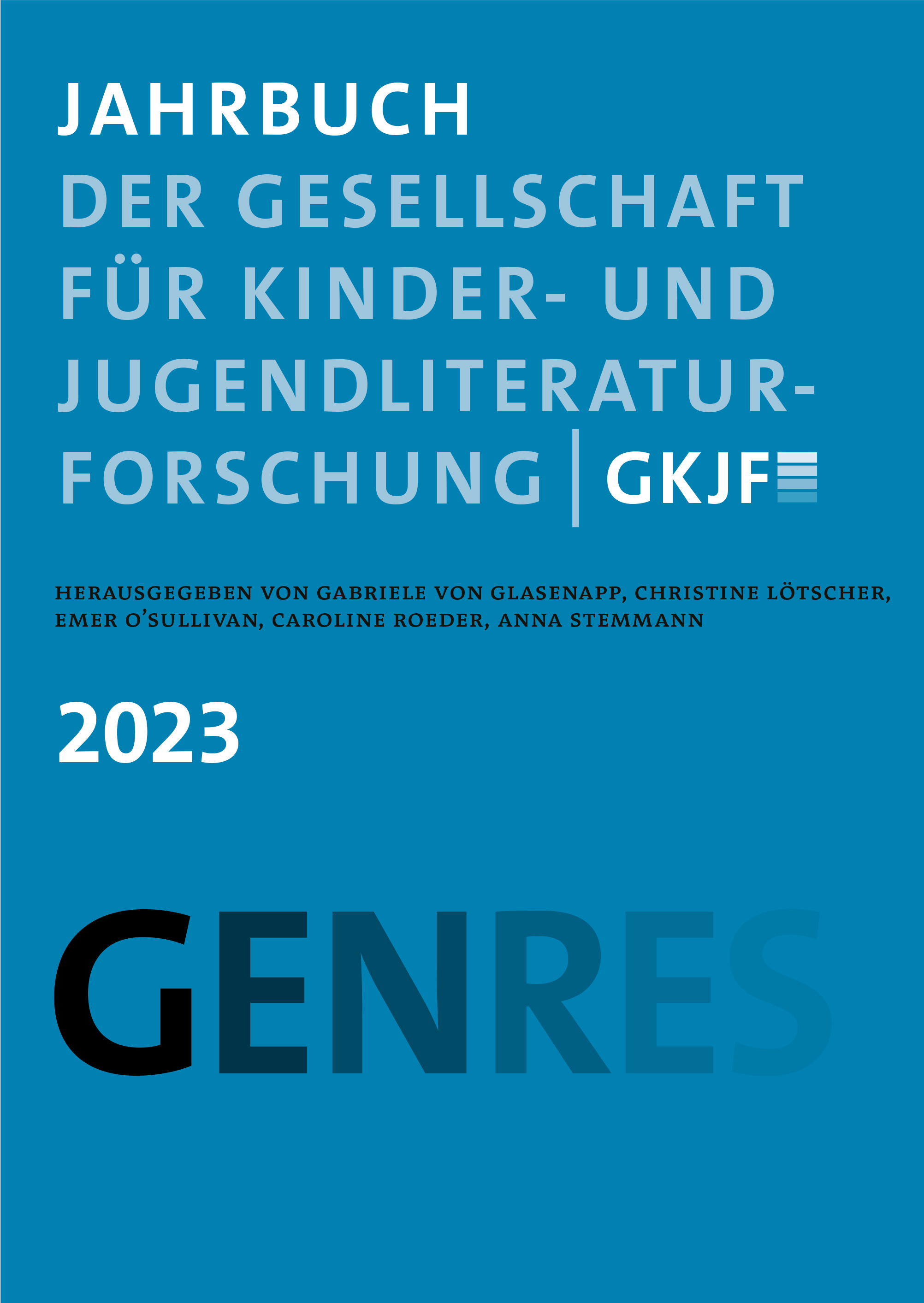Handlungssystem und Symbolsystem
Überlegungen zum heuristischen Mehrwert innerhalb der Kinder- und Jugendliteraturforschung
DOI:
https://doi.org/10.21248/gkjf-jb.111Abstract
[English title and abstract below]
Handlungssystem und Symbolsystem sind etablierte Konzepte der Kinder- und Jugendliteraturforschung. Üblicherweise werden sie nicht näher bestimmt; sie scheinen sich von selbst zu verstehen. Im Artikel wird rekonstruiert, wie Handlungssystem und Symbolsystem in den Diskurs eingeführt wurden und was sie bezeichnen. Methodisch erfolgt dabei eine Orientierung an aktuellen praxeologischen Forschungen, die wissenschaftliche Routinen in ihrer Entstehung und in ihrem Kontext perspektivieren. Nicht zu unterschätzen ist dabei, dass, wie Stefan Martus ausführt, literaturwissenschaftliche Praxis immer eine geteilte Praxis ist, wobei sich die Erkenntnisse des Fachs zu einem beträchtlichen Teil aus informellen, alltäglichen Interaktionen ergäben. Eine mögliche Erklärung für die Etablierung der Begriffe in der Kinder- und Jugendliteraturforschung könnte die Attraktivität der Systemtheorie in den 1990er-Jahren sein. Ferner ist mit Begriffsgebrauch stets eine ‚forschungsstrategische‘ Dimension verbunden, die sich in diesem Fall auch auf die Konstitution der Kinder- und Jugendliteraturforschung als eigenständiger Disziplin richtet. Ausgehend von der leitenden These, dass sowohl Handlungssystem als auch Symbolsystem – auf unterschiedliche Art und Weise – mehrdeutig sind, werden zum einen die verschiedenen Intensionen beider Begriffe rekonstruiert. Zum anderen wird am Ende des Beitrags zur Diskussion gestellt, ob ein Festhalten an diesen Begriffen sinnvoll ist.
‘Handlungssystem’ and ‘Symbolsystem’
Reflections on the Heuristic Value of the Concepts in Research on Children’s and Young Adult Literature
The concepts of ‘Handlungssystem’ [agent system] and ‘Symbolsystem’ [system of symbols] are established in German-language children’s literature scholarship. They are not usually defined in more detail but are taken as self-explanatory. This article reconstructs how the concepts of ‘Handlungssystem’ and ‘Symbolsystem’were introduced into the discourse and what they denote. Methodologically, the argumentation is oriented towards current praxeological research, which focuses on the emergence and context of academic practices. The practice of literary studies is, as Steffen Martus reminds us, always a shared one, in which the insights of the discipline are derived to a considerable extent from informal, everyday interactions. The popularity of systems theory in the 1990s might be a reason the terms became established in children’s literature scholarship. In addition, the use of terms is always associated with research strategy, which in this case is directed towards the constitution of children’s literature research as an autonomous discipline. This article begins with the premise that both terms are ambiguous – in different ways. It will reconstruct the different intentions of the terms before finally asking whether it makes sense to adhere to the concepts of ‘Handlungssystem’ and ‘Symbolsystem’.
Downloads
Veröffentlicht
Ausgabe
Rubrik
Lizenz
Copyright (c) 2023 Jahrbuch der Gesellschaft für Kinder- und Jugendliteraturforschung

Dieses Werk steht unter der Lizenz Creative Commons Namensnennung - Nicht-kommerziell 4.0 International.





